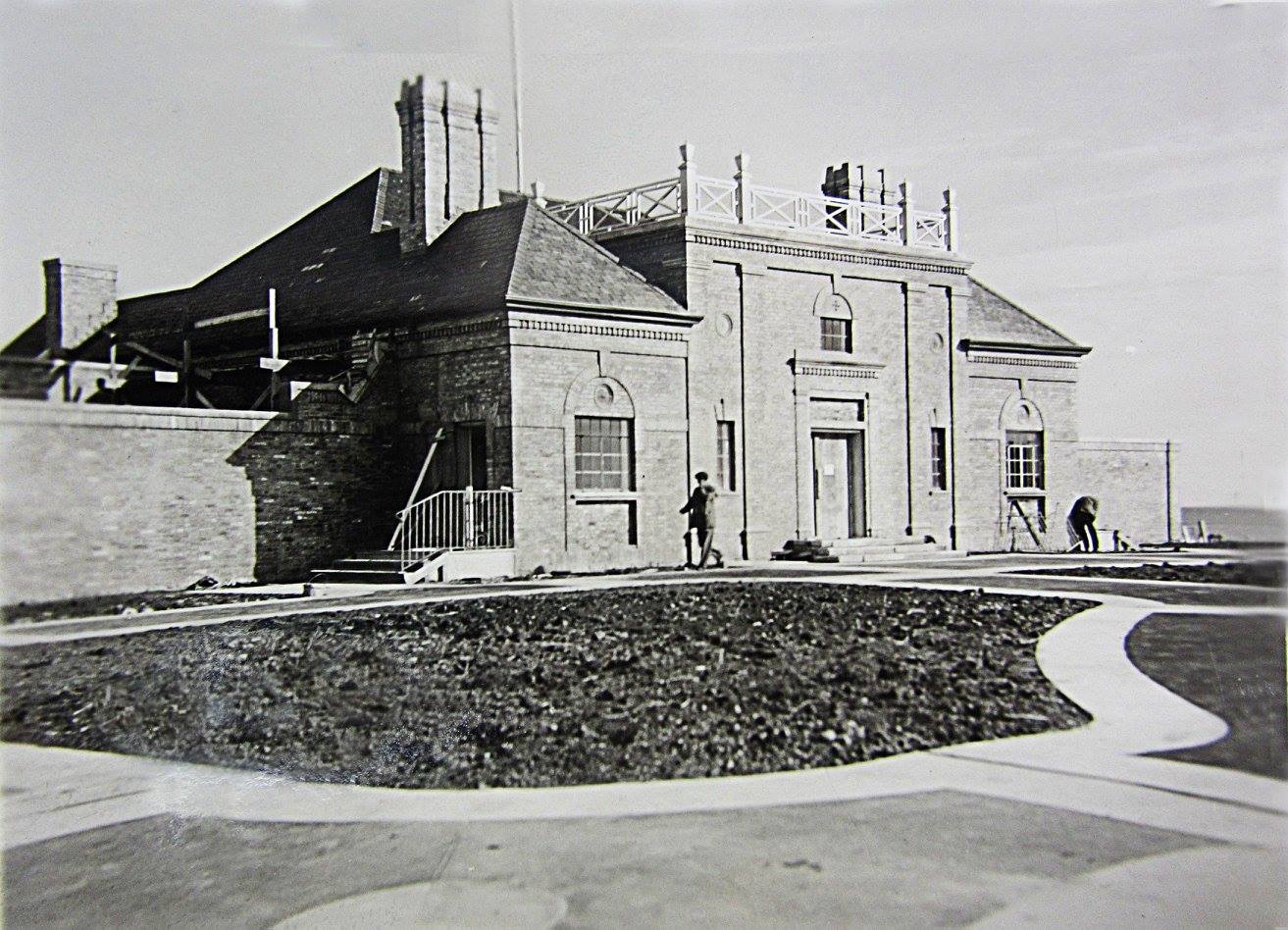NEWS
The Living New Deal

History the Southport Park Beach House Overview courtesy of The Living New Deal (https://livingnewdeal.org)
Project type: Flood and Erosion control, Parks & Recreation New Deal Agencies: Works Progress Administration (WPA) Started: 1936 Completed: 1941 Designers: Christian Borggren
From the Wisconsin Historical Society entry on the beach house:
The Southport Beach House, like most of Kenosha’s park structures, was a product of President Roosevelt’s Works Progress Administration (WPA). The Southport Beach House, begun in 1936, was largely constructed with repurposed materials. Rather than paying for new materials, the city paid workers to tear down condemned buildings as well as build new ones. The beach house was built with slate, stone and marble materials salvaged from the old Kenosha post office, which would have been otherwise unaffordable.
The beach house design is a unique blend of popular architectural styles. The east side combines Tudor window details with Mediterranean arches, while the symmetry and mass of the west side show Classical Revival influences. The interior features a modern Art Deco ballroom with abstract, geometric ornamentation executed in paint, raised plaster, and aluminum banding applied to the walls and ceilings. The Southport Beach House remains open for parties and public events.
From a contributor involved in historical preservation efforts on the site:
“Looking for a solution to erosion problems, finally in the 1930s, the city was introduced to the marine engineering work of Sydney Makepeace Wood. Wood researched and studied permeable jetties to trap silt, which would create beaches that would act as a buffer for the pounding waves when a big storm would hit the coastline. The city and Wood were so confident about the success of the groins, or jetties, they used funds provided by the Works Progress Administration to build the Southport Beach House to sink pilings deep into the sand.”
The 12 groins the city and WPA built immediately stopped the erosion problems the city was having. Many other western Lake Michigan cities that came to see Kenosha’s success and replicated this approach on their shorelines. The Southport Beach House became the crown jewel of Kenosha’s lakefront. Crowds of swimmers and bathers came to the shore to enjoy the lake and it’s beautiful swimming areas. The Beach House offered both residents and visitors facilities to change, store their belongings, swim, shower, and dine in a beautiful setting on the shore of Lake Michigan.
The project was undertaken by the Works Progress Administration (WPA) in the mid-1930s, giving work to many local unemployed laborers who had previously worked in Kenosha’s manufacturing businesses, such as American Brass, Jockey, and Snap-on Tools. Workers constructed the groins right on the shoreline: cement was poured into forms, hardened, and lifted by cranes and stacked from the shore out into the lake. They were built to be permeable structures allowing water to pass through so that a good percentage of the silt would expand Kenosha’s shoreline. Sydney Makepeace Wood nicknamed them “beach creators”; while the locals soon just thought of them as piers or jetties for fishing.
The Southport Beach House was built between 1936 and 1941. To keep men working and families fed, they worked year round-even throughout freezing winters. The Beach House has two stories on the east side and a separate entrance to the upper level ballroom on the west side of the building. The lower level was built to hold changing rooms, a concession stand, and a lifeguard rescue station with boathouse. Children would arrive on their bicycles, often without parents, and receive a basket and an elastic bracelet for identification. They would change their clothes and deposit their belongings in their basket which would then be stored by an employee from the concession stand. They would swim between the jetties attended by lifeguards hired for the summer by the city. The concession stand was stocked with candy bars, ice cream and sodas. The changing rooms were open to the sky with two story walls on all sides, so the second floor wings on the west side upstairs are formed by the walls of the beach level changing rooms.
The upstairs interior is in the elegant art deco style, which was popular during the era when the beach house was constructed. The beautiful hardwood floors show off the artistry and attention to detail of the workers. The large upstairs ballroom holds about 200 people comfortably and has held many weddings and receptions. There is a stage for musicians and on the opposite side
of the room a kitchen area with a pass through. The windows open to the swimming area on the east. The entrance has bathrooms on both sides and a cloak room for guests.
Cream city bricks, salvaged from the Bain Wagon Company, were used to build the beach house. A 1974 Kenosha News story quoted architect Chris Borggren, then 77 years old: “It was during the Great Depression and we were trying to develop WPA projects. Remember the old Bain Wagon Works? Well they went out of business because no one was buying wagons anymore. We used the brick from their building and the old slate from a roof from the old Chicago Northwestern Depot in Racine….”
In the years after 1972 when the Army Corp of Engineers filled in the permeable groins, the swimming area become stagnant and putrid. In turn, the beach house began a long period of dormancy and structural decline. Winter storms have had a destructive effect on the exterior, which was worsened by poor repairs. For example, graffiti was covered over with paint, which led to spalling brick; and cement was used for tuck pointing in a number of areas, causing further damage to brick surfaces. The lower level changing rooms, food service facilities, life guard station and other amenities were eventually closed to the public and also fell into disrepair.


